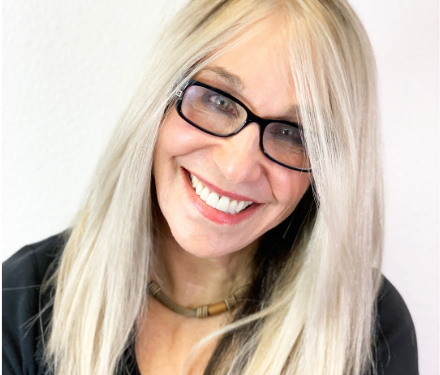I had breast cancer over 20 years ago. So my remission is my mission. There is a lot we can do besides finish whatever care we took, such as surgery or other interventions, and then believe we got it all and go out into the wild, cross our fingers, and wish for the best.
Never guide your life choices by “we got it all” and then assume you are now safe.
It makes sense to retweek your physiologic terrain, to make it healthier. It makes sense to identify and fix glitches that had allowed your body to grow a nasty cancer in the first place.
You can be very proactive.
Based on the scientific literature, there are 5 steps, at least, that I take daily to stay well. As do the many cancer patients whose medical nutrition I advise.
How we live, each choice we make, adds up. For good or bad. We can be born with genetic tendencies, good or bad genes. But our choices—in food, exercise, stress-coping skills, and even balanced hormones or not—can turn bad genes “off” and good genes “on,” so we have input into our own outcomes.
This is especially true for breast cancer.
And especially true for Jewish breasts.
I first decided to write this blog because an article came out showing that women with Ashkenazi Jewish heritage could have more risk of getting breast cancer, beyond the basic BRCA1 and BRCA2 genetic glitches that we have known about for a while.
Science had been showing that genetic mutations in BRCA1 and BRCA2 increase the risk of breast and ovarian cancer in Ashkenazi Jewish women. When I had breast cancer 22 years ago, these tests weren’t available like they are now. But their link to breast cancer in the scientific literature was starting to be discussed. So proactive me, and never wanting to leave a stone unturned, I spent thousands of dollars out of my own pocket, to get tested for these genetic mutations. After all, if you have BRAC1 and BRCA2, you might get more aggressive in treatment and prevention in a variety of ways.
But new variations in the BRAC genes and even entirely new genetic glitches, are being linked to some Jewish boobs having more risk of breast cancer. Hey, I can politically chat like this because I was Bas Mitzvahed.
It appears that this recipe—being Jewish and having breasts—is an Oy Veh-er. This tricky combination should inspire being extra careful “just because” your Jewish genes can be quirky.
But remember, science has clearly shown that we are not merely victims of our DNA. The choices we make 24/7 dictate if good and bad genes turn off and on. How you CHOOSE to eat, think, exercise, laugh, connect, and balance your hormones all influence your health, not just vulnerable genes.
No matter who is born with shredded Levi’s, we can earn designer genes.
Regular surgery, chemo, and radiation address “daughter” cancer cells. They do not focus on eradicating cancer “stem” cells, which are the ones that most put us at risk of recurrence.
There are thousands of articles in peer review literature that show that specific, safe drugs, foods, herbs, etc., help eradicate stem cells.
This is my specialty. Not sure why regular cancer care does not focus on this. But it’s in the science and if you are high risk or had cancer, it makes sense that you embrace protective steps.
Being that I want to keep, as much as humanly possible, cancer in my rear view mirror, here are 5 steps I do daily to prevent recurrence:
1) Consume a blue food at least once, if not twice a day.
Blue foods include blue/red cabbage, blueberries, purple grapes, purple/blue carrots, radicchio, blue cauliflower, blue potato skins, and even blue corn.
2) Exercise and keep your waistline trimmer.
Exercising, especially with short bursts of high intensity, keeps you fitter. Fitness and optimal weight help prevent recurrence.
3) Low-dose naltrexone (LDN)
LDN is a drug that, in high dosages, treats drug overdose, but in low dosages is a super immune booster that helps eradicate cancer stem cells. It can even be taken while on a lot of chemos to help them work better.
4) Avoid sugar, reduce carbs.
Many sugars promote cancer cell proliferation, especially if tumor cells have insulin receptors. Ditch the processed sweets!
5) Eat A few teaspoons at least of broccoli sprouts a day.
They contain sulfurophan that helps eradicate cancer stem cells.
Yes, there are many more protective actions to take. For example, I use oxytocin nasal spray shown to kill the type of breast cancer cells I had. But it has a number of contraindications, so it should only be used in individual cases and only while being monitored by an expert.
But these steps are good to know and a very good protective start.
May the anti-cancer force be with you!
Knowledge is power.
Get buffed!
Read more about preventing breast cancer recurrence here
Want to keep up to date on latest health news? Click here to join my email community and receive a free EBook “10 Signs Your Brain is Aging Rapidly And 10 Secrets on How to Keep It Young” as a welcome gift.
__________________
Genetic Predisposition to Breast Cancer Due to Mutations Other Than BRCA1 and BRCA2 Founder Alleles Among Ashkenazi Jewish Women. JAMAOncology, 2017
J Food Sci Technol. 2017 Jun;54(7):1953-1963. Anthocyanins enriched purple tea exhibits antioxidant, immunostimulatory and anticancer activities.
NPJ Breast Cancer. 2016 Aug 24;2:16026. Changes in diet quality in a randomized weight loss trial in breast cancer survivors: the lifestyle, exercise, and nutrition (LEAN) study.
Exp Biol Med (Maywood). 2011 Jul;236(7):viii. Low-dose naltrexone: harnessing the body’s own chemistry to treat human ovarian cancer
Exp Biol Med (Maywood). 2011 Jul;236(7):883-95. Low-dose naltrexone suppresses ovarian cancer and exhibits enhanced inhibition in combination with cisplatin.
Int J Oncol. 2016 Aug;49(2):793-802. Naltrexone at low doses upregulates a unique gene expression not seen with normal doses: Implications for its use in cancer therapy.
Proceedings of the National Academy of Sciences, 2013; 110 (34): E3152. Initiation of GalNAc-type O-glycosylation in the endoplasmic reticulum promotes cancer cell invasiveness.
Nature Communications, 2017; 8: 15503 The distinct metabolic phenotype of lung squamous cell carcinoma defines selective vulnerability to glycolytic inhibition.
Cancer Res, January 1, 2016 76:24-29. A Sucrose-Enriched Diet Promotes Tumorigenesis in Mammary Gland in Part through the 12-Lipoxygenase Pathway.
Clinical Cancer Research, 2010; 16 (9): 2580. Sulforaphane, a Dietary Component of Broccoli/Broccoli Sprouts, Inhibits Breast Cancer Stem Cells.
Johns Hopkins Medical Institutions. “Cancer Protection Compound Abundant In Broccoli Sprouts, Johns Hopkins Scientists Find.” ScienceDaily. ScienceDaily, 19 September 1997

